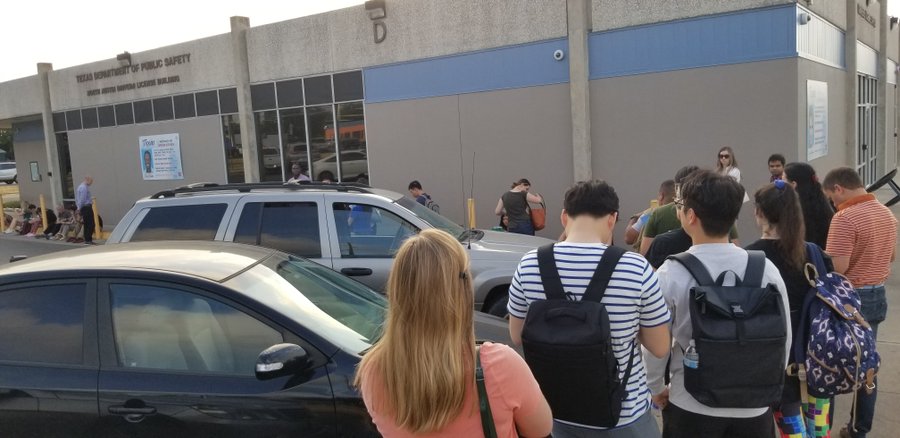The WSJ article focused on jurisdictions where misdemeanor arrests could be broken out by race, with arrests of black people accounting for a disproportionate share of the decrease. Texas data don't immediately allow us to make similar, racially delineated analyses, but the overall trend of reduced misdemeanor cases holds for Texas.
Texas misdemeanor cases by the numbers
Looking at top-line stats from the Office of Court Administration's 2018 Annual Statistical Report (from which all graphs below are screenshots), the number of non-traffic misdemeanor cases in Texas peaked in 2007 at 585,499, declining to 404,001.
When you consider Texas' dramatic population growth over these years, the decline appears even more significant.
Texas witnessed especially large declines over the previous five years in misdemeanor theft (-47%), theft by check (-81%), and driving with an invalid license (-25%), with small increases (less than population growth) for family violence (5%), marijuana possession (4%), and 1st offense DWI (2%).
Grits finds especially interesting the decline in misdemeanor-property-theft cases. Texas raised property-theft thresholds in 2015, so that one must now steal $2,500 to be charged with a felony. Felony-theft cases predictably declined in response, but misdemeanor theft cases declined even more. Perhaps that's a function of cops being less willing to focus attention on low-level cases, the tuff-on-crime crowd will surely say. But both reported crime stats and the National Crime Victim Survey tell us property thefts declined throughout this period. So if police did de-prioritize them, then policing clearly wasn't having the crime deterring effect that traditional models might predict. In fact, if such "de-policing" occurred, it correlated with less theft, not more. This raises a counter-intuitive possibility: Maybe what police do after the fact doesn't have that much to do with crime rates in the first place?
The 2018 data don't capture the period after the Texas Legislature accidentally made pot cases more difficult to prosecute without a lab test, but before then, both misdemeanor drug cases (mostly pot) and felony drug cases (mostly harder drugs) were a big source of growth in prosecutions:
Here's how new Texas misdemeanor and felony cases broke out in FY 2018:
The biggest decline, however, has been in traffic cases and other Class C misdemeanors, a trend which this blog has documented in the past.
Delving more deeply into these Class Cs, every category except local traffic ordinances have declined over the last five years. (I'm curious if readers have any suggestions why enforcement of local traffic ordinances would increase by a third over the last five years while enforcement of state traffic laws declined?)
Moreover, juvenile Class C cases have plummeted, driven largely but not entirely by the state's decriminalization of truancy:
Reporters or policy makers who would like to replicate these data for their local area may use the OCA's data query tool to break them out by jurisdiction.
What's going on?
So why is this happening? Some of the trends cited in the WSJ article don't apply to Texas - e.g., marijuana legalization or decrim hasn't happened here, and Texas' car-patrol-based policing doesn't see as frequent use of "stop and frisk" tactics as do jurisdictions where officers walk a beat.
The WSJ cited FBI statistics to document "steady declines in disorderly conduct, drunkenness, prostitution and loitering violations," which arguably could be a function of the rise of smart phones, gaming, and internet culture. Much "disorderly conduct" now occurs online, much to the detriment of the political culture, while "loitering" these days may more frequently involve staring at a telephone. Similarly, prostitutes in 2019 are less likely to stand out on the street and more likely to respond to text messages or queries on a website.
And our pal Alexandra Natapoff, now of UC Irvine and author of Punishment Without Crime, a book-length treatment of misdemeanor questions, suggested the trend might also relate to "changes in police arrest quota and promotion policies" or attempts to reduce "Jail costs."
Since we don't know why arrests continued to rise as crime declined, it's equally hard to tell why arrests went down as crime declined even more. For that matter, no one knows for sure why crime has declined in the first place. There are many hypotheses.
For my part, Grits considers the decline in misdemeanor arrests and cases mainly a positive development, not a problem to solve. Others' mileage may vary.












.jpg)